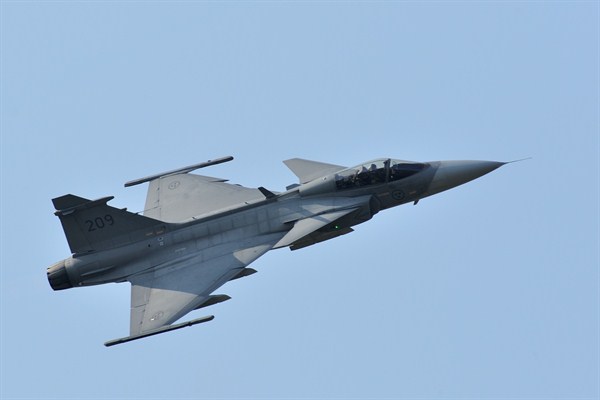In March, Sweden abruptly decided not to renew a five-year defense industry cooperation deal with Saudi Arabia, amid a diplomatic spat after Sweden’s foreign minister criticized Riyadh over its human rights record. The controversy led to headlines around the world and exposed the tension for Sweden, the world’s 12th-largest arms exporter, between promoting global defense sales and advancing democracy and human rights. But this is far from a new issue for Stockholm, and given the worsening security climate in Europe, the Saudi episode is unlikely to change minds in Sweden about the need to export defense equipment, even to non-democracies.
Even though Sweden is a relatively small country, it built and sustained a sizeable defense industry during the 20th century, primarily driven by the needs of a formally neutral country to reliably supply its armed forces with high-quality equipment and platforms. During the Cold War, Sweden fielded almost the full range of advanced materiel needed by the Swedish armed forces, from several generations of fighter jets and a large number of submarine classes, to anti-tank weapons, infantry fighting vehicles and even main battle tanks. To be sure, Sweden was never entirely independent of outside suppliers, and the linkages established between Swedish industry and foreign suppliers were also used to quietly deepen Stockholm’s relationship with foreign powers. For example, nearly half of the key components and sub-systems of the JAS-39 Gripen fighter jet are sourced from U.S. suppliers, but integrated and assembled by Saab in Sweden.
All this began to change after the end of the Cold War. With defense budget cuts, the domestic market was not enough to sustain the considerable national defense industry. Instead, Swedish industry was privatized and internationalized and set out to find niches in the global defense market, which it did with success. Saab has sold Gripens to, among others, South Africa, Thailand and Brazil; Kockums supplied submarines to Australia and won the modernization contract for retired Swedish submarines that were sold to Singapore; and Hagglunds has sold its main CV90 infantry fighting vehicle to Denmark, Norway, the Netherlands, Switzerland and others.

